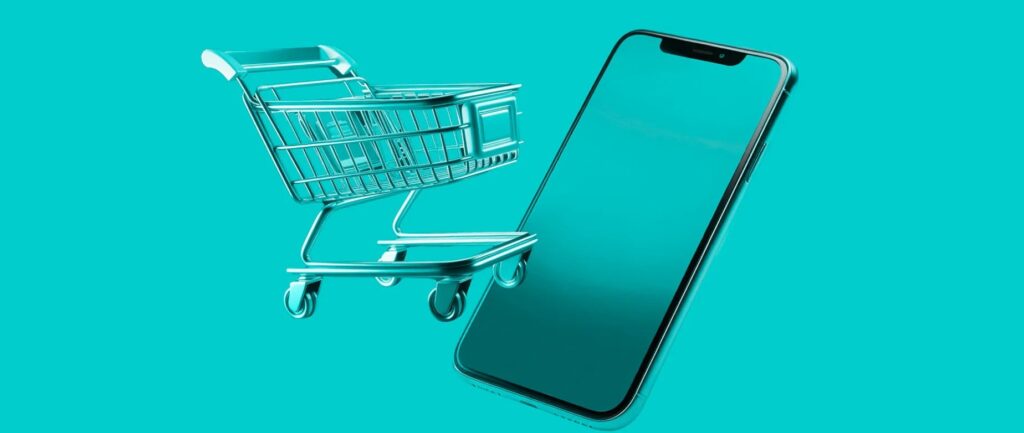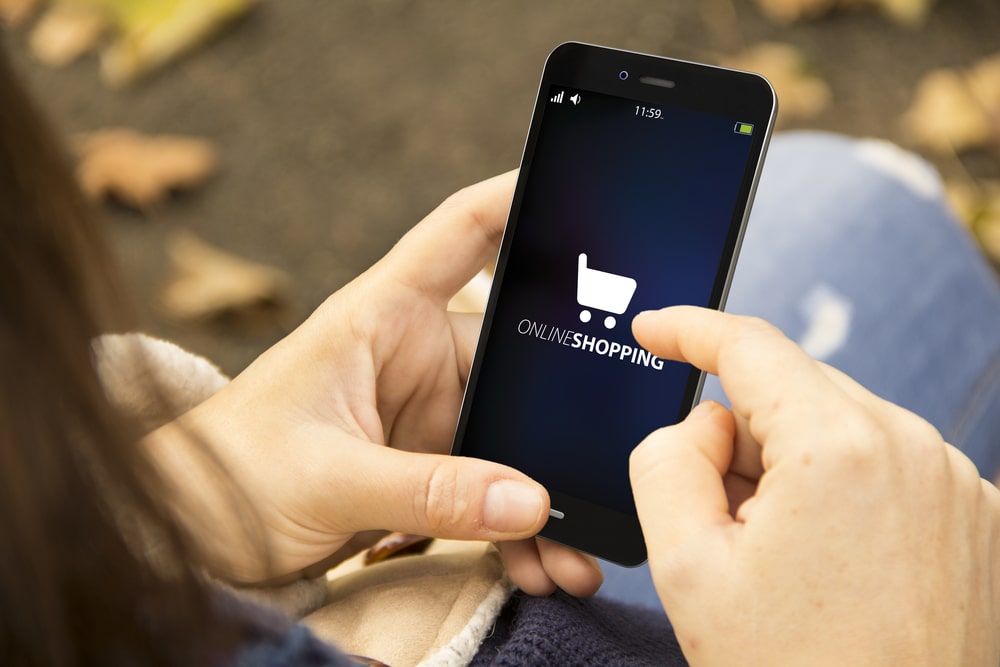Developpez votre application m-commerce transformed my small business! By creating an easy-to-use mobile app, I reached more customers and increased my sales. The process was smooth, and now my business thrives in the digital age.
Developpez votre application m-commerce is a French phrase that translates to “Develop your m-commerce application” in English. It refers to the process of creating a mobile commerce application, allowing businesses to sell products or services through mobile devices.
Our focus will be on the comprehensive development of an m-commerce application titled Développez votre application m-commerce. We will navigate through essential stages, from initial planning strategies to ongoing management post-launch.
What Is M-Commerce And Why Is It Important For Businesses Today?
M-commerce means buying and selling stuff using phones and tablets. It lets you shop from anywhere using apps or mobile websites.
Unlike regular online shopping on computers, m-commerce uses the convenience of mobile devices to make shopping easier.
For businesses, m-commerce is super important now because so many people use smartphones and tablets.
It lets businesses connect directly with customers on their personal devices, where they spend a lot of time.
Having an m-commerce app helps businesses engage customers better, offer personalized shopping experiences, and make buying things quick and easy. It also boosts sales and makes customers more loyal to the brand.
How Does M-Commerce Differ From Traditional E-Commerce?

Traditional e-commerce means buying and selling things online using devices like computers or laptops. You usually do this from home or work where you have a big screen and use a mouse and keyboard to click around.
M-commerce, or mobile commerce, is about buying and selling stuff using smartphones or tablets. You can shop wherever you are, not just at home.
Mobile apps for shopping are made to fit small screens and are easy to use with your fingers, like swiping and tapping. They also use things like GPS and quick payment options to make buying things fast and simple.
Read: Aze300x – Discovering The Aze300x Technology!
What Are The Key Benefits Of Developing An M-Commerce Application For Businesses?
- Increased Accessibility: Allows customers to shop anytime, anywhere using their mobile devices.
- Enhanced Customer Engagement: Provides personalized shopping experiences and real-time notifications, boosting interaction with the brand.
- Convenience for Users: Simplifies the shopping process with easy navigation and quick checkout options.
- Improved Brand Visibility: Establishes a dedicated presence on users’ mobile screens, reinforcing brand awareness.
- Higher Sales Potential: Expands sales channels and opportunities through mobile transactions.
- Data Insights: Provides valuable analytics on customer behavior and preferences, aiding in targeted marketing strategies.
- Competitive Advantage: Stays ahead in the digital marketplace by meeting consumer expectations for mobile-friendly services.
How Can Understanding Your Target Audience Impact The Success Of Your M-Commerce App?

Understanding your target audience is crucial for the success of your m-commerce app because it allows you to design an app that meets their specific needs and preferences.
By knowing who your users are, what they like, and how they shop on mobile devices, you can tailor the app’s features, design, and user experience to provide exactly what they’re looking for.
This personalized approach not only enhances user satisfaction but also increases engagement and boosts the likelihood of users making purchases through your app.
Ultimately, catering to your target audience’s behaviors and preferences can lead to higher app adoption rates and better business outcomes in the competitive mobile commerce market.
What Are The Different Platform Options Available For Developing M-Commerce Apps?
When developing an m-commerce app, businesses have several platform options to choose from:
Native Apps:
These are developed specifically for one platform, like iOS or Android. They offer high performance and can make full use of device features, but require separate development for each platform.
Cross-Platform Apps
These apps are built using frameworks like React Native or Flutter. They allow developers to write code once and deploy it across multiple platforms (iOS and Android). They save time and effort in development but may sacrifice some platform-specific performance optimizations.
Progressive Web Apps
PWAs are web-based applications accessed through a browser. They offer a hybrid experience, combining the benefits of web and mobile apps. PWAs are easy to update and don’t require installation from an app store, but they may have limitations in accessing device features compared to native apps.
What Are Some Best Practices For Developing And Testing An M-Commerce App?

Developing an m-commerce app means creating a mobile app that lets people shop using their phones or tablets. Testing involves checking the app thoroughly to make sure it works well before it’s available to users.
When developing your app, start by clearly defining what you want it to do and how it should look. This includes planning out its features and how users will interact with it.
Choosing the right technology, like deciding if it should work on both Android and Apple devices or just one, is important for how well your app will work.
What role do analytics play in optimizing an m-commerce app?
Analytics help in making an m-commerce app better. They track how people use the app, like what they buy or where they spend time. This data shows what’s popular and what needs improvement.
For example, if many people abandon their shopping carts at a certain step, analytics can pinpoint the issue.
It helps businesses understand customers’ behaviors, so they can make the app easier to use and more appealing. By using analytics, businesses can improve sales and make customers happier.
Read: Enjoy4fun – Explore Our Game Library Today!
What Steps Are Involved In Planning And Designing A User-Friendly M-Commerce Application?

Research and Understand Your Audience
Conduct thorough market research to understand your target audience’s demographics, behaviors, and preferences. This will help you tailor your app to meet their specific needs.
Outline Essential Features
Determine the core features your app must have based on user needs and business goals. Prioritize features that enhance user experience and facilitate smooth transactions.
Create User Personas
Develop fictional characters that represent your target users. This helps visualize their behaviors, motivations, and expectations when using your app, guiding your design decisions.
Focus on User Experience (UX)
Prioritize usability and accessibility. Ensure that users can complete tasks intuitively with minimal effort. Provide clear instructions and feedback for user actions.
Optimize for Mobile
Design your app with mobile devices in mind, considering factors like screen size, touch gestures, and performance. Ensure fast loading times and seamless interactions.
What Strategies Can Businesses Use To Market Their M-Commerce Apps Effectively?
To effectively market their m-commerce apps, businesses can employ several key strategies. Firstly, leveraging social media platforms like Facebook, Instagram, and Twitter allows them to reach a broad audience.
By creating engaging posts, running targeted ads, and interacting with users, businesses can generate interest and drive app downloads.
Secondly, collaborating with influencers who have a strong following in their niche can amplify app visibility.
Influencers can endorse the app through authentic reviews or demonstrations, reaching potential users who trust their recommendations.
This approach not only enhances brand credibility but also attracts a dedicated audience likely to engage with the app.
What Are Some Emerging Technologies Expected To Impact The Future Of M-Commerce Apps?

In the future, m-commerce apps will likely be influenced by several exciting technologies. Artificial Intelligence (AI) is expected to play a big role by offering personalized recommendations based on user behavior, making shopping experiences more tailored and enjoyable.
Voice commerce, where users can make purchases using voice commands through devices like Siri or Alexa, will also become more common, offering a hands-free and convenient way to shop.
Read: Pöversätt – Connect Globally Through Language Translation!
Conclusion:
Developing your m-commerce application is crucial in today’s digital landscape to meet the growing demand for mobile shopping. By focusing on user experience, security, and effective marketing strategies, businesses can create successful apps that enhance customer engagement and drive revenue growth.
FAQs:
1. How often should businesses update their m-commerce apps?
Regular updates are essential to fix bugs, introduce new features, and adapt to evolving user expectations and technological advancements.
2. How can businesses ensure the security of transactions within their m-commerce apps?
Implementing robust security measures such as encryption of sensitive data, using secure payment gateways, and complying with industry standards like PCI DSS are crucial.
3. What are the advantages of choosing native app development for m-commerce?
Native apps offer superior performance and user experience tailored to specific operating systems (iOS, Android), ensuring seamless functionality and security.
4. What are the challenges businesses might face during the development of an m-commerce app?
Challenges may include choosing the right development platform, ensuring compatibility across devices, maintaining app performance, and addressing security concerns.
Read more:
- Betterthistechs Article – Exploring The Future Of Technology
- How Old Is Breckie Hill – A Rising Star In The World Of Social Media
- Vc7774 Apple Shaped Body Celebrities – Celebrating Elegance
- Crypto Bastion 25mshenbloomberg – A Beacon In The Cryptocurrency Landscape






